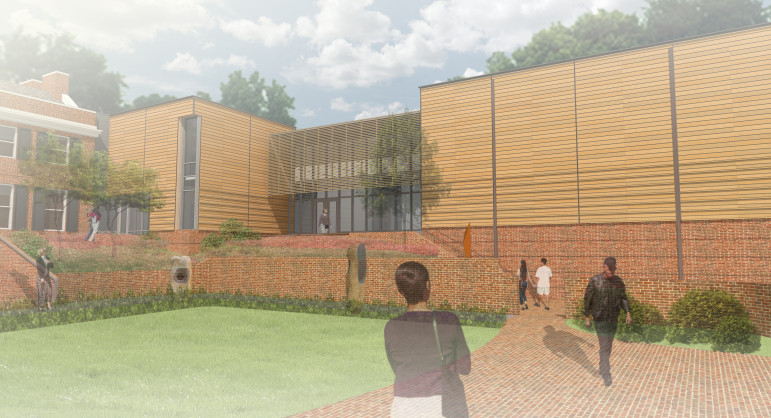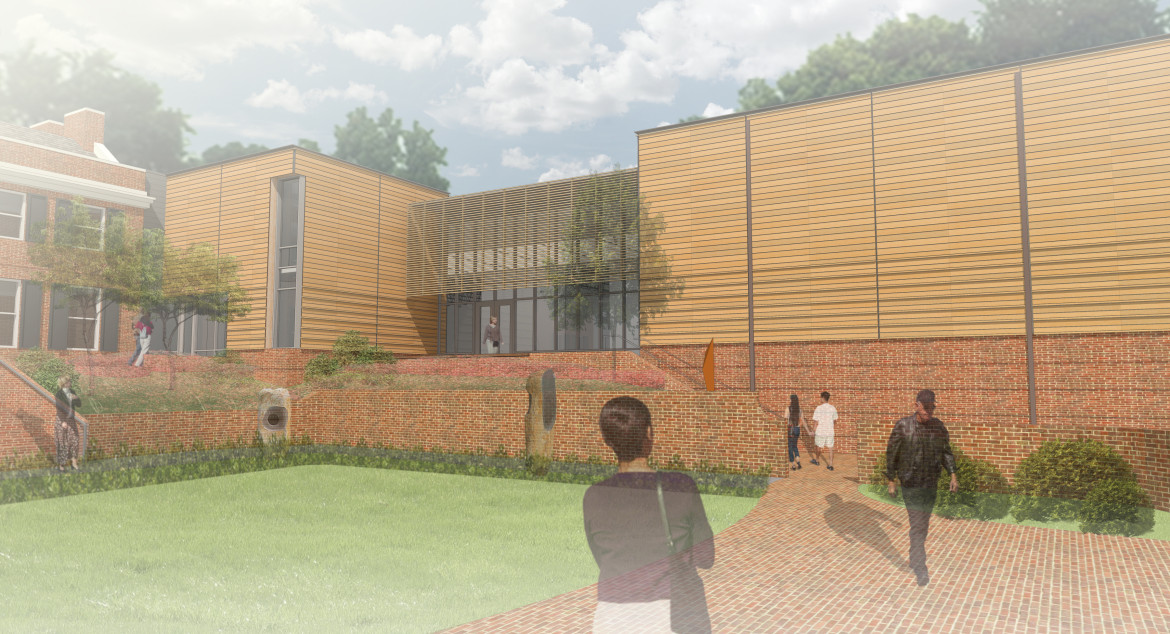The Wake County Board of Commissioners on Monday approved more than $1.6 million in capital expenditures that will create a new athletic facility in Holly Springs and improve the area around the Gregg Museum in Raleigh.

Perkins + Will
A rendering of the new Gregg Museum
The commitment of capital funding is the result of a competitive process that four projects out of ten for their economic impact and unmet need, among other factors.
The project in Holly Springs to build an athletic complex required a $1 million commitment by the county, and the project in Raleigh surrounding the Gregg Museum required a $650,000 commitment by the county.
Both items were approved unanimously.

Town of Holly Springs
The Holly Springs Athletic Complex
The regular agenda featured three public hearings.
The first concerned the reclassification of 127.2 acres from the jurisdiction of Raleigh to the jurisdiction of Rolesville. The reclassification of the land, denoted as a “short range urban services area,” would not affect property developers, according to Bryan Coates, Wake County planner. Commissioner Sullivan made the motion to approve and the motion was carried.
The second public hearing moved to set a minimum width requirement between telecommunication towers in Wake County. County staff and the Planning Board of Wake County both recommended approval of the minimum width requirement. Commissioner Ward made the motion to approve and it passed unanimously.
The final public hearing concerned fixed banner signs, which was said to be a new type of sign that had not been regulated within the county before. Regulations for the signs were proposed to the commissioners, such as the maximum sign space on a property and which property it could be placed on. Commissioner Hutchinson made a motion to approve and Commissioner Holmes seconded. It was passed in full.
The board’s consent agenda, which included an item reallocating and appropriating money within the Wake County public school system, passed in full.
John Creighton, the Wake County Emergency Management director, made a brief presentation outlining the hazard mitigation plan for the county. The plan looked at the threats to, risks toward, capabilities of, and overall mitigation goals of the county.
“We focus our attention on where it needs to be,” Creighton said.
“First, I think it’s wonderful that we’re planning for these natural disasters,” Commissioner Hutchinson said.
The hazard mitigation plan was approved and adopted by the board of commissioners.
Item 16 proposed to the board the purchasing of the Sonya Tongue property in eastern Wake County. The property represented a donut-hole in the county’s attempts to purchase and preserve open space in that area. Chris Snow, the Parks, Recreation, and Open Space director, informed the commissioners about the acquisition-solicitation process and requested approval of the appropriation of funds.
A motion was made to approve, seconded, and carried without dissent.
Denise Foreman, assistant to the county manager, made a presentation about Wake County’s 2015 state legislative agenda and the North Carolina Association of County Commissioners (NCACC) 2015-2016 goals. The legislative agenda includes emergency plan review funding and funding for the individual assistance program.
Of the NCACC goals, Foreman said, “There were 43 goals approved by county delegates.”
“The goals are just the start of the process,” board chair and commissioner West said. “It was Benjamin Mays who said, the tragedy is not in not reaching your goals. It’s a tragedy to have no goals at all.”
